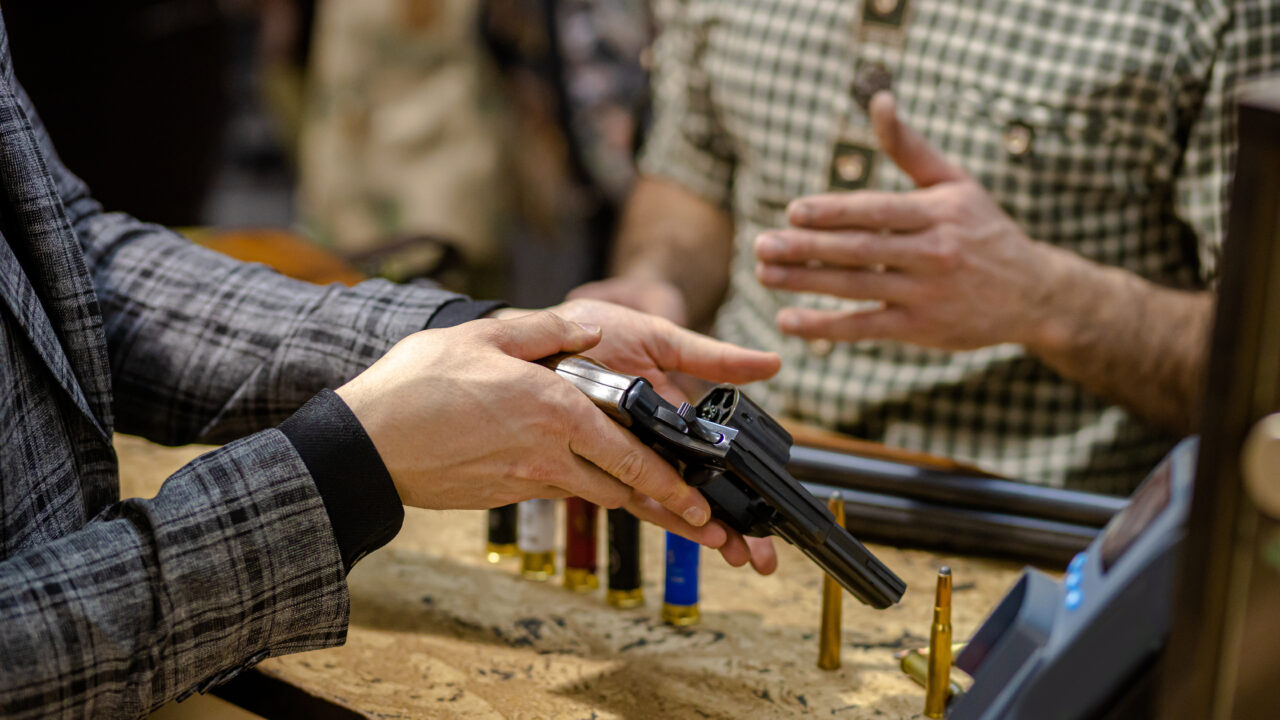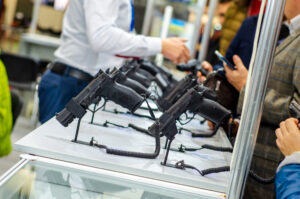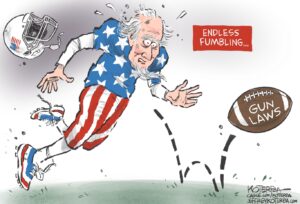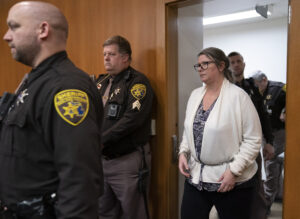Suicide Rates of Teenage Boys Skyrocket Due to Firearm Access
Experts on adolescent suicide say too often, guns and stigma around masculinity and mental health lead to deadly outcomes. Image: Adobe
Image: Adobe
September is National Suicide Prevention Month and The 19th is looking at how gender factors into the political and cultural forces at play in suicide prevention.
Suicide rates were 3.2 times higher for teenage boys than teen girls between 2018 and 2020 — with guns increasingly playing an outsize role. Boys and young men represent 80 percent of all youth suicide deaths, and 90 percent of all those who die by suicide using a firearm.
“Few people know that the majority of gun deaths in this country are actually suicides,” said Nina Vinik, the founder and executive director of Project Unloaded, an organization that works with teens and adolescents to make data-backed decisions to reduce the risk of being hurt by gun violence. “When most people think about gun violence, they tend to think about interpersonal gun violence, which is certainly important — but really overlooks the crisis that we are facing with firearm suicide.”
Suicide is the second leading cause of death among people ages 15 to 24 in the United States, and suicide rates for 15- to 19-year olds have jumped by 29 percent in the past 10 years.
Vinik noted that the suicide rate, already at a 20-year high, is rising the most quickly among young people of color. And in terms of how youths are dying, young men of color are seeing firearm suicide rates increase “exponentially, by triple digits. This is having a particularly devastating impact on young people of color and I think this has really been overlooked in the data.” Presently, the firearm suicide rate is highest with Native American and Alaska Native young men and Black men — but Asian and Pacific Islanders, Latinx, and Black young men constitute the fastest-growing firearm suicide rates of any racial and ethnic groups in the Unites States.
This reality, Vinik said, is rooted in the fact that young people of color often have a harder time gaining access to mental health resources and treatment when they are struggling. Stereotypes about race, geography and gun violence can also hinder their ability to get help. “In areas of the country where crime is prevalent, that’s what people think about when they think about young kids of color and gun violence,” Vinik said. “They aren’t thinking about the mental health challenges young people of color are facing, so they don’t think about the risk for suicide.”
Boys and young men represent 80 percent of all youth suicide deaths, and 90 percent of all those who die by suicide using a firearm.
But for young men of color, this issue is in fact top of mind. Vinik cites research conducted by Project Unloaded that has found that young people of color in particular, when compared to their White peers, cite the intersection of mental health and firearm suicide as an issue that they are “very concerned about.” This is all the more true for young men of color who live in areas with high rates of community violence, often in urban centers, who cite feeling pressured to have a gun themselves for their own safety and protection, she said. These same young men, however, often also say that they understand that “more guns are not making their communities safer, and in fact that more guns are making their communities less safe.”
Urban areas are not the only parts of the country feeling the weight of firearm suicide among young men. In rural areas across the United States, suicide rates are increasing — especially among young men.
Kurt Michael, PhD, is the clinical director of The Jed Foundation and an expert on adolescent suicidology and youth mental health in rural communities. Michael has spent significant periods of his career working throughout the South and the West, in rural communities where suicide rates tend to be disproportionately higher.
Recent research from Everytown for Gun Safety found that the states with the highest rates of firearm suicide for among young people are Alaska, Wyoming, Montana, Idaho and New Mexico; states with the fastest-growing firearm suicide rates among young people over the past decade are Indiana, Colorado, Missouri, Georgia and New Mexico. “One reality in rural America that cuts across rural communities is that in the predominant ways of sustaining life, business and work is agriculture and ranching — and firearms are a part of that culture,” Michael said. “We have this interaction between access to firearms and firearm suicides and to me, that correlation is one that cannot be ignored.”
He said that often in working with families who learn that their son might be suicidal, adults are often not aware of the fact that having a firearm in the home “poses a direct threat” to their child. That conversation can make for a critical moment to discuss safe storage. “When you explain it that way, especially from the point of being respectful of their customs whether that be hunting or shooting sports, their acceptability of different storage practices is often pretty, pretty high.”
Vinik echoed this sentiment, stressing that the majority of young people who are killing themselves with guns are accessing those guns in their own homes. “More and more people are bringing guns into their homes and when they do that, that increases the risk for suicide for members of that family threefold. For young people, that risk increases fourfold.”
Michael pointed out that firearm suicides have an over 90 percent mortality rate. Young men tend to pick firearms as their first choice of method when they attempt suicide, he explained, which is why the rates are so much higher for that demographic. “Method selection explains the difference, but exactly why males tend to pick firearms as their first choice is not well understood.”
For context, Michael explains that typically people who are older, White, and male are more likely to attempt suicide using fatal means – most often, guns. Historically, younger individuals have tended to choose less lethal means, and thus do not die of suicide attempts at the same rate as older Americans. But with increased access to guns — especially after the pandemic, when gun sales soared and feelings of loneliness and isolation increased — firearms are now entering the equation when it comes to suicide and young men in a way they have not historically. Michael also pointed out an uptick in suicide attempts amongst younger male teens utilizing long guns and rifles because prohibitions for getting handguns are often more restrictive. According to federal regulation, adults have to be 21 to buy a handgun and only 18 to buy a shotgun or long gun. “In other words, it’s once again a question of access,” Michael said.
Michael pointed to “traditional, cisgender masculinity” as a factor in the rising suicide rate among teenage boys and young men.
In rural areas across the United States, suicide rates are increasing — especially among young men.
“If you are a person that’s either been raised to believe that seeking help for mental health ailments is a sign of weakness, you might also be a person at risk for suicide,” Michael said. Because of the way many boys are socialized and because of cultural norms that exist around the idea of masculinity, stigma associated with needing, yet alone receiving help, might explain why young men are being so disproportionately impacted by suicide, especially suicide involving firearms. This stigma can be even more compounded in rural communities, he said, where fear of even having your car recognized outside of a provider’s office might be enough to stop someone from seeking the help they want and need. “For some individuals, these are really legitimate reasons.”
Michael pointed to research showing that rural teens perceive themselves as having at least twice the level of access to firearms than their urban counterparts. Understanding just how widespread the problem of suicide deaths are among teen boys in America is thus also about understanding not just the realities of rural living, but the realities of gun access. “If you look at a sample of states with high rates of gun ownership and then compare that with states with relatively lower rates of gun ownership and look at total suicide rates across those groups, the higher number of suicides in the high gun-owning states seem to be associated with gun suicides and not other methods.”
This makes owner responsibility all the more important. Safe storage, Michael said, is an essential component when talking about addressing suicide generally — and especially the trends being seen with young men. “There’s definitely an access problem, being that it’s too easy to get access to a gun. Regardless of demographics, anyone who has access to a gun, that’s something that immediately puts them in harm’s way.”
Michael himself is a lifelong hunter, participant in shooting sports, and gun owner. “The way I store my firearms is very specific, trying to create multiple prevention techniques to prevent access.” He recommends all gun owners do the same, emphasizing that even firearms procured for protection should have barriers like a biometric safe. “It’s never about confiscation,” he said. “It’s always about safe storage.”
Your support matters…Independent journalism is under threat and overshadowed by heavily funded mainstream media.
You can help level the playing field. Become a member.
Your tax-deductible contribution keeps us digging beneath the headlines to give you thought-provoking, investigative reporting and analysis that unearths what's really happening- without compromise.
Give today to support our courageous, independent journalists.






You need to be a supporter to comment.
There are currently no responses to this article.
Be the first to respond.